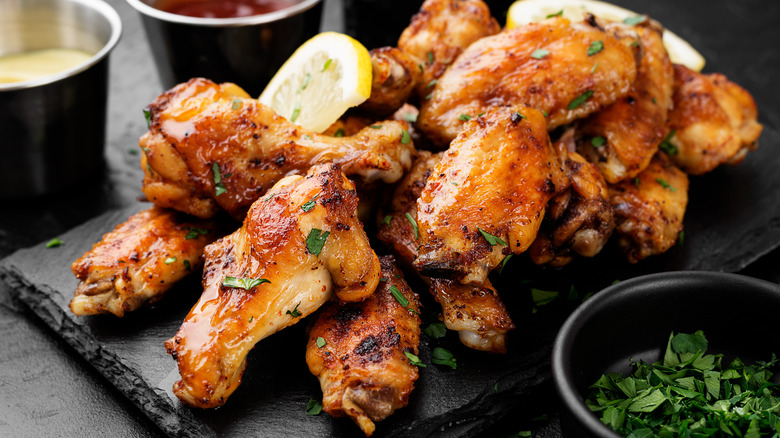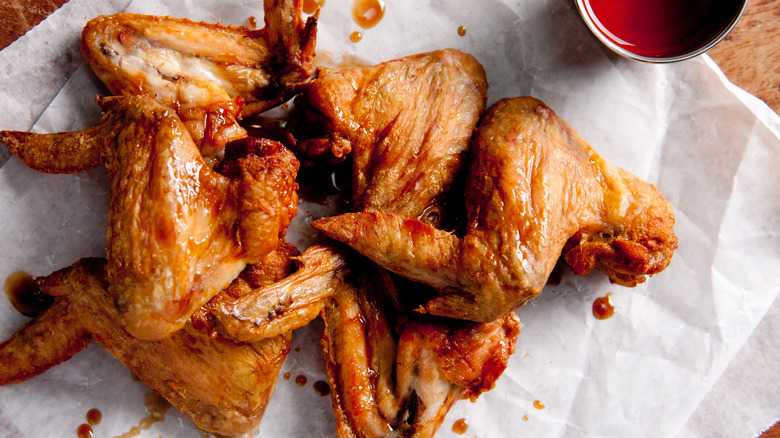The Scientific Reason Chicken Wings Are Composed Of White Meat
White meat or dark meat? The debate is bound to arise whenever someone has to divvy up a bird for dinner. While some extol the virtues of lean white meat, others praise dark meat for its flavor and extra-juicy nature, which is why you shouldn't worry about overcooking chicken thighs.
The nutritional differences between the two are more nuanced than you might imagine. MasterClass reveals that each type offers a unique balance of vitamins and minerals and suggests we eat both white and dark meat for balance. Of course, the main difference that most people focus on is white meat's lower fat content, but that is not true of all white meat, per Cook's Illustrated.
When you mention white meat, most people's minds will shoot straight to chicken breast, but we can't forget those good ol' wings. Packing the handheld convenience of the drumstick into a smaller, almost bite-sized package, chicken wings are the epitome of finger food, whether you enjoy them baked, grilled, or fried. Speaking of drumsticks, it might surprise some to find out how different the two types of limb meat are. After all, drumsticks are composed of dark meat and wings are not, but what's behind this difference?
Chickens don't use their wings much
Have you ever wondered why white and dark meat are different shades, to begin with? According to the USDA, the disparity is due to varying myoglobin levels in the meat. Myoglobin is a type of protein that is responsible for storing oxygen and supplying it to muscle cells (via the Cleveland Clinic). Muscle cells, such as those in the limbs and heart, need ample oxygen to perform their vital work. The USDA notes that myoglobin levels in different cuts of meat generally reflect the level of activity those muscles are involved in, which leads us to the key difference between a chicken's legs and wings.
Chicken wings have pale meat because, according to Cook's Illustrated, they aren't used much. Chickens spend most of their lives on their feet, so their legs are composed of endurance muscles that need lots of oxygen for power. Therefore, chicken legs have high levels of myoglobin. Conversely, a chicken's wings are composed of fast-twitch muscles used only in short bursts, so they don't require nearly as much myoglobin as the lower limbs. However, Cook's notes that the fat content of chicken wings is closer to that of thighs than breasts, helping to prevent them from drying out when they cook, despite their small size.
So the next time someone passes up a chicken wing at the dinner table because they consider it dark meat, you can educate them on the subject unless you want to save the wings for yourself.

